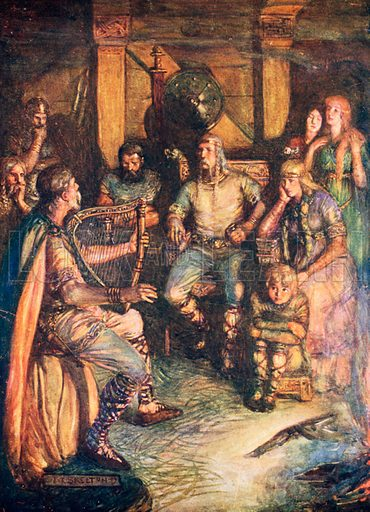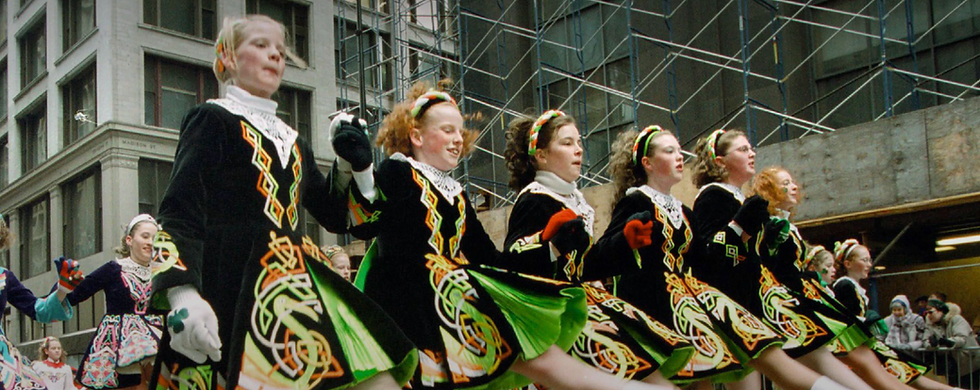The Celts in Britain — Who Were They, and What Became of Them?
- Kyrie
- Mar 7, 2023
- 5 min read
Updated: Jun 21, 2023
The Vasfian tribes in my historical fantasy series, Enemy’s Keeper, are inspired by the Celtic Britons. My novels take place in AD 1075 and blend history with elements of alternate history such as… what if the Celts maintained a distinct presence after the Norman Conquest of England?
(Normans, Anglo-Saxons, and now Celts, oh my!)
I enjoyed exploring the culture clash resulting from all three groups colliding and struggling to work together despite their differences.
With the first book, Healer's Blade (Enemy's Keeper Book 1), set to be released this June, I thought it’ll be time to blog about the Celts!
Who were the Celts?

Contrary to popular belief, the ‘Celts’ were not a particular ethnicity. Instead, they comprised several distinct tribes connected by their artistry, customs, and religion. Archaeological studies have revealed this ancient civilization’s magnitude and reach - from Spain to Turkey, Italy to Scotland. They controlled most of Great Britain from around 800 BC to the Romans’ invasion of 43 AD under Emperor Claudius.
Perhaps unsurprisingly, the Romans depicted the Celts as barbaric and uncultured, with an alleged fascination for human sacrifice. As for how true that is… more on this later!
The Greeks referred to the Celts as ‘Keltoi’ or ‘Galatians’, while the Romans referred to them as ‘Celtae’ or ‘Gauls’. They often portrayed the Celts as fierce warriors with a near-mythical capacity for destruction and used the term “Celt” in an ill-defined and offensive way, essentially referring to people living beyond the boundaries of civilization.
In recent years, the term ‘Celtic’ has been associated with political movements such as Welsh, Scottish, Cornish, and Irish independence. This is a bit confusing, because ancient Roman historians did not consider Britain and Ireland part of the Celtic world.
Living in a Celtic Settlement

Celts in Britain typically lived in roundhouses, either scattered among small farms or walled-in districts. These structures were characterized by conical roofs covered with thatch and wattle and daub walls. They featured ample space for the whole family, timber granaries, animal pens, and work spaces surrounded by furrowed fields and pastures.
Farming was the primary means of providing sustenance. Celtic families or clans were part of larger tribes, and each one had an elite leader to whom they swore loyalty in exchange for protection and food production.
From 600 to 100 BC, Britain’s Celtic culture constructed hundreds of awe-inspiring hillforts marked by grand banks and ditches that enclosed large areas. These structures served as political, economic, and religious centers, yet in times of war may have also provided refuge for community members.
Hillforts had more capacity than the population required, so much of the space was used for food storage. There is evidence of religious activity in human burials, animal sacrifices, and other deposits such as spears, swords, and mirrors.
Although much of the details surrounding tribal organization remain unknown, we know that powerful ruling dynasties governed large tribes from their hillforts. These elites would have been heavily protected by a warrior class and amassed their wealth through trading or warfare.
Did the Celts have an egalitarian society?

I’ve read some conflicting information on this topic, but the majority of sources (textbooks and HistoryExtra.com) say that Celtic women had much greater freedom than those living under Rome’s rule - from marriage choices and business ownership to land rights and household presence.
In a strange twist of fate, the Roman Empire viewed equal rights between men and women as a sign of how “uncivilized” the Celts were. Julius Caesar wrote about how husbands and wives shared their wealth; there are just as many burials from wealthy Iron Age males in British cultures as there are for females.
The Mehi tribe in my Enemy’s Keeper series is inspired by Celtic egalitarian society. Their young and newly elected chief, Reiya, is a secondary protagonist trying to save her people from a strange illness that seems to affect neither the Anglo-Saxons nor the Normans.
Celtic Gods

While the Greeks and Romans had a shared pantheon of gods, Celts embraced an array of different deities that were unique to individual tribes or certain natural features of their landscape. Celtic gods could be connected with rivers, forests, mountains, or other vital parts of nature’s beauty. Unfortunately, we don’t have much information about these divine beings today.
The Celts believed their gods had a special connection to water, which is why so many exquisite examples of Celtic metalwork have been found in waterways throughout Britain.
The Vasfians in the Enemy’s Keeper series primarily worship the Lenus (or Lenus Mars), a warrior god also associated with healing and good fortune. Sanctuaries to Lenus can be found in present-day Germany and Britain. Depending on the location, these sanctuaries feature a temple, bath, theatre, and other buildings, possibly to house worshipping pilgrims.
Did the Celts sacrifice humans?
(there are no images in this section!)
The archeological evidence indicates that they did, and the Romans abhorred them for it.
According to Mediterranean writers, Celtic priests (“druids”) consulted human entrails for messages from the gods. While it’s conceivable that this was all propaganda to demonize their Celtic enemies, prehistoric bodies discovered in the wetlands of Ireland, Denmark, and Scandinavia give evidence that human sacrifice was indeed practiced. The overall similarities of the injuries indicate that these executions were part of a ritualistic practice—a threefold death.
Ok, now it gets a bit violent. Skip the next paragraph if you don’t want details.
The threefold death involves being struck on the head, strangled with a cord, then having one’s throat cut. Evidence of this is found in a young man found in Lindow Moss in Chesire, known as the Lindow Man. This unfortunate individual was deposited face down in the bog after death, and is only one of many ‘bog bodies’. Other bog bodies have been found beheaded or cut in half.
The Celts were also known for head-hunting, taking the skulls of both their enemies and honored ancestors to display them in their homes and decorate their horses
(Hmm I can see why the Romans weren’t fans of this…)
Heads of young men can be seen on display in Ribemont, France, and Danebury, England, although it’s unclear whether these individuals died in combat or were victims of sacrifice.
Julius Ceaser himself also described a mass burning of criminals in a giant wickerman, although we have not found archeological evidence to support his observations.
In my Enemy's Keeper series, I avoided mentioning these human sacrifices except as a passing detail. Instead, I focus on the reactions of my Christian Anglo-Saxon and Norman protagonists to these ritualistic practices. I wanted to show how a young Norman squire and a Vasfian woman can set aside their differences and work toward a common goal… and maybe even fall in love (many, many, many pages later!)
Where are the Celts now?

In AD 43, the Roman Empire invaded Britain, dominating over half of the island until the 5th century. The new government maintained the British power system, which included kings, queens, and landowners, as a way to give authority to already existing leaders. This motivated the Celtic leaders to become a part of the Roman citizenship ‘club’ and helped Roman influence to spread.
Numerous British kingdoms evolved in the years following the collapse of Roman rule, influenced by a fresh wave of migrants who brought Germanic (English) forms of language and art.
In a nutshell, the Celts never really went anywhere. Their people were absorbed into other kingdoms and societies with time. As HistoryExtra puts it, “Some areas of Britain, such as what is now Wales, Scotland and Cornwall, remained largely free of Roman influence, while Ireland was never part of the Roman empire. All later helped to reintroduce Celtic art and tradition back into what was once the province of Britannia.”

The Celtic legacy of independence, bravery, and creativity has endured in many aspects of modern life - from our language to our art and culture.
The end of the Enemy’s Keeper series hints at the unison of Norman and Vasfian (“Celtic”) culture through the budding romance between my protagonists Matthew and Reiya. I highlight their struggles and triumphs as they travel from the underground hot springs of a Vasfian hillfort to the fortified manor houses of Norman society, all in pursuit of a rebel knight threatening the rule of William the Conqueror.
You can read Enemy's Keeper: Healer's Blade (Enemy's Keeper Book 1) on Amazon and KU!



Comments